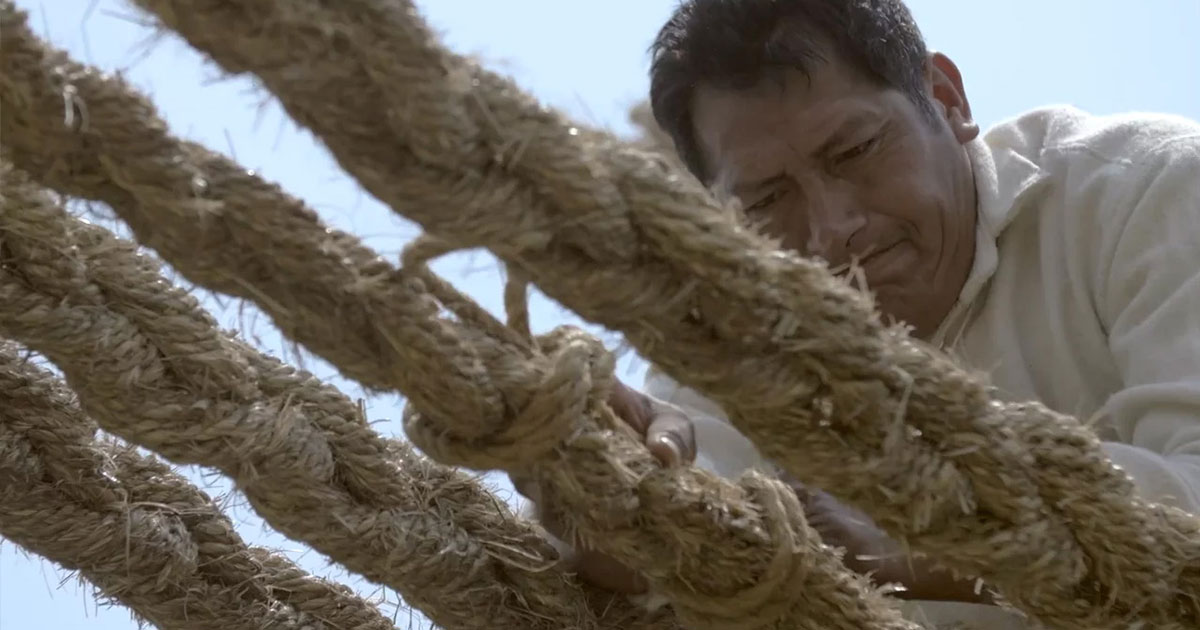“According to our grandfathers, this bridge was built during the time of the Inkas 600 years ago, and on it they walked their llamas and alpacas carrying their produce.”
—Eleuterio Ccallo Tapia
The Inkas built the Q’eswachaka Bridge using a local grass called ichu (Jarava ichu) to make q’oya, braided ropes that could be destroyed after crossing the Apurimac River. Now the bridge is rebuilt annually by members of four Quechua communities: Huinchiri, Chaupibanda, Choccayhua, and Ccollana Quehue, who work together to maintain the tradition. Thanks to their communal effort, the bridge has survived for hundreds of years, acting as a link between the past and the future. Braiding the ropes symbolizes the constant connection of the communities to their traditions.
Building the Q’eswachaka

Every June, four Quechua communities convene to build the Q’eswachaka. They first ask the Pachamama for permission and then collect the q’oya ropes braided by women and young girls. The chakarauwaq (engineers) tie the ropes, let the old bridge fall, and begin weaving. Once finished, they give thanks to Apu Q’eswachaka (mountain spirits).




Traditions and Celebrations
At each stage of the building process, the chakarauwaq make offerings of coca leaves, potatoes, and corn to the apus (spirits of the mountains). When the bridge is finished, the community gives thanks, celebrating with music, chuñu phasi (freeze-dried potatoes), and chicha (corn beverage).



